 Web Front-end
Web Front-end JS Tutorial
JS Tutorial Function throttling and function stabilization in JS (detailed tutorial)
Function throttling and function stabilization in JS (detailed tutorial)This article mainly introduces the analysis of JS function throttling and function anti-shake problems. It is very good and has reference value. Friends in need can refer to it
Question 1: If the dom drag and drop function is implemented , but when binding the drag event, I found that every time the element moved a little bit, a large number of callback functions were triggered, causing the browser to freeze directly. What should I do at this time?

**Question 2: **If a button is bound to the post event of form submission, but the user sometimes clicks multiple times under extremely poor network conditions The button causes the form to be submitted repeatedly. How to prevent multiple submissions?
In order to deal with the above scenario, the two concepts of function anti-shake and function throttling have emerged. In general:
These two methods are to control the number of executions of the function on the timeline. .
Function debounce(debounce)
Concept: Execute the callback n seconds after the event is triggered. If the event is triggered again within n seconds, is triggered, the timer will restart.
Examples in life: If someone enters the elevator (triggers the event), the elevator will depart in 10 seconds (execute the event listener). At this time, if someone enters the elevator again (again within 10 seconds) trigger the event), we have to wait another 10 seconds before starting (re-timing).
Function throttling (throttle)
Concept: Specifies a unit time. Within this unit time, there can only be one trigger event. The callback function is executed. If an event is triggered multiple times in the same unit of time, only one event will take effect.
Examples in life: We know that a current saying is that when more than 24 pictures are played continuously within 1 second, a coherent animation will be formed in the human vision, so in the movie The playback (used to be, but I don’t know now) is basically played at a speed of 24 pictures per second. Why not 100 pictures or more? Because when 24 pictures can meet the needs of human vision, 100 pictures will seem to be a waste of resources. .
Analysis Chart
Assume that the total time of our observation is 10 seconds, and 1 second is specified as the minimum interval time for an event.
If the frequency of trigger events is 0.5s/time, then the function anti-shake is as shown in the figure

Because it is never possible to wait for one second before being triggered again , so in the end none of the events was successful.
Function throttling is shown in the figure

Because it is controlled at most once per second, the frequency is 0.5s/time, so there is one event every second void. The final control is 1s/time
If the frequency of triggering events is 2s/time, then the
function anti-shake is as shown

because 2s/time
is already greater than the specified minimum time, so it is triggered every two seconds.
The function throttling is as shown in the figure

Similarly, 2s/time is greater than the minimum time requirement, so every trigger takes effect.
Application scenarios
For function anti-shake, there are the following application scenarios:
Add function anti-shake to the button to prevent the form from being submitted multiple times.
When performing AJAX verification for continuous input in the input box, using function anti-shake can effectively reduce the number of requests.
Determine whether the scroll slides to the bottom and anti-shake the scroll event function
In general, it is suitable for responding to multiple events at one time
For function throttling, there are the following scenarios:
Refresh rate in the game
DOM element drag
Canvas brush function
In general, it is suitable for a large number of events to be evenly distributed and triggered according to time.
Source code
Function anti-shake:
function debounce(fn, wait) {
var timer = null;
return function () {
var context = this
var args = arguments
if (timer) {
clearTimeout(timer);
timer = null;
}
timer = setTimeout(function () {
fn.apply(context, args)
}, wait)
}
}
var fn = function () {
console.log('boom')
}
setInterval(debounce(fn,500),1000) // 第一次在1500ms后触发,之后每1000ms触发一次
setInterval(debounce(fn,2000),1000) // 不会触发一次(我把函数防抖看出技能读条,如果读条没完成就用技能,便会失败而且重新读条)The reason why it returns a function is because the anti-shake itself is more like a Function modification, so I did a function currying. Closure is also used, and the variable of the closure is timer.
Function throttling
function throttle(fn, gapTime) {
let _lastTime = null;
return function () {
let _nowTime = + new Date()
if (_nowTime - _lastTime > gapTime || !_lastTime) {
fn();
_lastTime = _nowTime
}
}
}
let fn = ()=>{
console.log('boom')
}
setInterval(throttle(fn,1000),10)The picture shows a simple function throttling implemented, the result is a boom once a second
The above is what I compiled for everyone. I hope it will be helpful to everyone in the future.
Related articles:
How to add an array to an object in js
How to create a complete project process using gulp
Use axios to upload files in vue
How to make images larger in JavaScript
The above is the detailed content of Function throttling and function stabilization in JS (detailed tutorial). For more information, please follow other related articles on the PHP Chinese website!
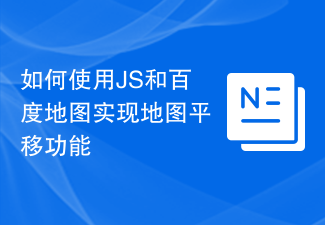 如何使用JS和百度地图实现地图平移功能Nov 21, 2023 am 10:00 AM
如何使用JS和百度地图实现地图平移功能Nov 21, 2023 am 10:00 AM如何使用JS和百度地图实现地图平移功能百度地图是一款广泛使用的地图服务平台,在Web开发中经常用于展示地理信息、定位等功能。本文将介绍如何使用JS和百度地图API实现地图平移功能,并提供具体的代码示例。一、准备工作使用百度地图API前,首先需要在百度地图开放平台(http://lbsyun.baidu.com/)上申请一个开发者账号,并创建一个应用。创建完成
 js字符串转数组Aug 03, 2023 pm 01:34 PM
js字符串转数组Aug 03, 2023 pm 01:34 PMjs字符串转数组的方法:1、使用“split()”方法,可以根据指定的分隔符将字符串分割成数组元素;2、使用“Array.from()”方法,可以将可迭代对象或类数组对象转换成真正的数组;3、使用for循环遍历,将每个字符依次添加到数组中;4、使用“Array.split()”方法,通过调用“Array.prototype.forEach()”将一个字符串拆分成数组的快捷方式。
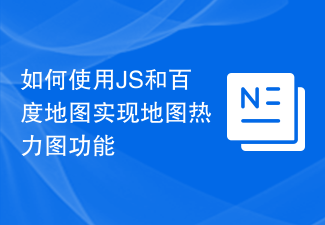 如何使用JS和百度地图实现地图热力图功能Nov 21, 2023 am 09:33 AM
如何使用JS和百度地图实现地图热力图功能Nov 21, 2023 am 09:33 AM如何使用JS和百度地图实现地图热力图功能简介:随着互联网和移动设备的迅速发展,地图成为了一种普遍的应用场景。而热力图作为一种可视化的展示方式,能够帮助我们更直观地了解数据的分布情况。本文将介绍如何使用JS和百度地图API来实现地图热力图的功能,并提供具体的代码示例。准备工作:在开始之前,你需要准备以下事项:一个百度开发者账号,并创建一个应用,获取到相应的AP
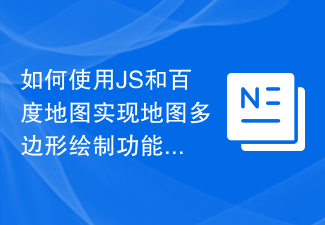 如何使用JS和百度地图实现地图多边形绘制功能Nov 21, 2023 am 10:53 AM
如何使用JS和百度地图实现地图多边形绘制功能Nov 21, 2023 am 10:53 AM如何使用JS和百度地图实现地图多边形绘制功能在现代网页开发中,地图应用已经成为常见的功能之一。而地图上绘制多边形,可以帮助我们将特定区域进行标记,方便用户进行查看和分析。本文将介绍如何使用JS和百度地图API实现地图多边形绘制功能,并提供具体的代码示例。首先,我们需要引入百度地图API。可以利用以下代码在HTML文件中导入百度地图API的JavaScript
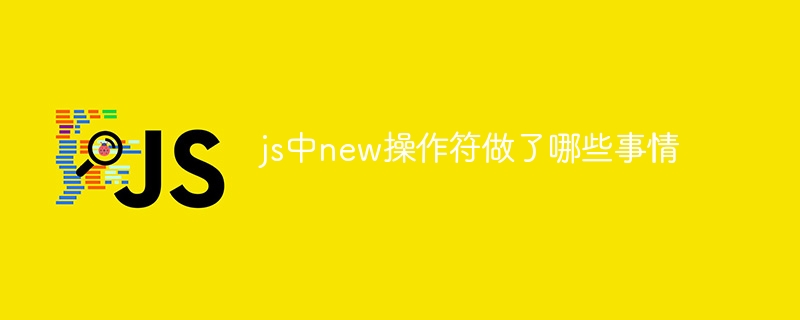 js中new操作符做了哪些事情Nov 13, 2023 pm 04:05 PM
js中new操作符做了哪些事情Nov 13, 2023 pm 04:05 PMjs中new操作符做了:1、创建一个空对象,这个新对象将成为函数的实例;2、将新对象的原型链接到构造函数的原型对象,这样新对象就可以访问构造函数原型对象中定义的属性和方法;3、将构造函数的作用域赋给新对象,这样新对象就可以通过this关键字来引用构造函数中的属性和方法;4、执行构造函数中的代码,构造函数中的代码将用于初始化新对象的属性和方法;5、如果构造函数中没有返回等等。
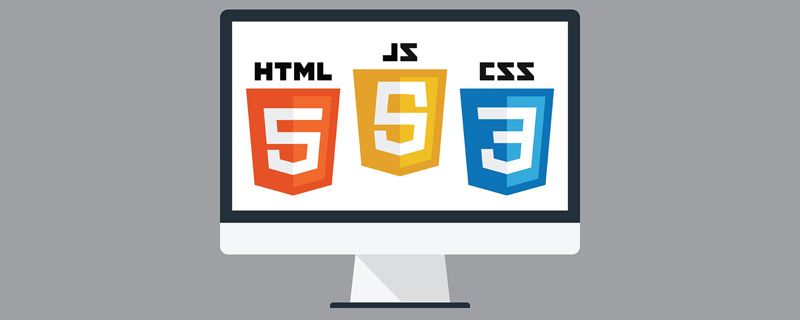 用JavaScript模拟实现打字小游戏!Aug 07, 2022 am 10:34 AM
用JavaScript模拟实现打字小游戏!Aug 07, 2022 am 10:34 AM这篇文章主要为大家详细介绍了js实现打字小游戏,文中示例代码介绍的非常详细,具有一定的参考价值,感兴趣的小伙伴们可以参考一下。
 php可以读js内部的数组吗Jul 12, 2023 pm 03:41 PM
php可以读js内部的数组吗Jul 12, 2023 pm 03:41 PMphp在特定情况下可以读js内部的数组。其方法是:1、在JavaScript中,创建一个包含需要传递给PHP的数组的变量;2、使用Ajax技术将该数组发送给PHP脚本。可以使用原生的JavaScript代码或者使用基于Ajax的JavaScript库如jQuery等;3、在PHP脚本中,接收传递过来的数组数据,并进行相应的处理即可。
 js是什么编程语言?May 05, 2019 am 10:22 AM
js是什么编程语言?May 05, 2019 am 10:22 AMjs全称JavaScript,是一种具有函数优先的轻量级,直译式、解释型或即时编译型的高级编程语言,是一种属于网络的高级脚本语言;JavaScript基于原型编程、多范式的动态脚本语言,并且支持面向对象、命令式和声明式,如函数式编程。


Hot AI Tools

Undresser.AI Undress
AI-powered app for creating realistic nude photos

AI Clothes Remover
Online AI tool for removing clothes from photos.

Undress AI Tool
Undress images for free

Clothoff.io
AI clothes remover

AI Hentai Generator
Generate AI Hentai for free.

Hot Article

Hot Tools

SublimeText3 Chinese version
Chinese version, very easy to use

Dreamweaver Mac version
Visual web development tools

WebStorm Mac version
Useful JavaScript development tools

Notepad++7.3.1
Easy-to-use and free code editor

SecLists
SecLists is the ultimate security tester's companion. It is a collection of various types of lists that are frequently used during security assessments, all in one place. SecLists helps make security testing more efficient and productive by conveniently providing all the lists a security tester might need. List types include usernames, passwords, URLs, fuzzing payloads, sensitive data patterns, web shells, and more. The tester can simply pull this repository onto a new test machine and he will have access to every type of list he needs.





